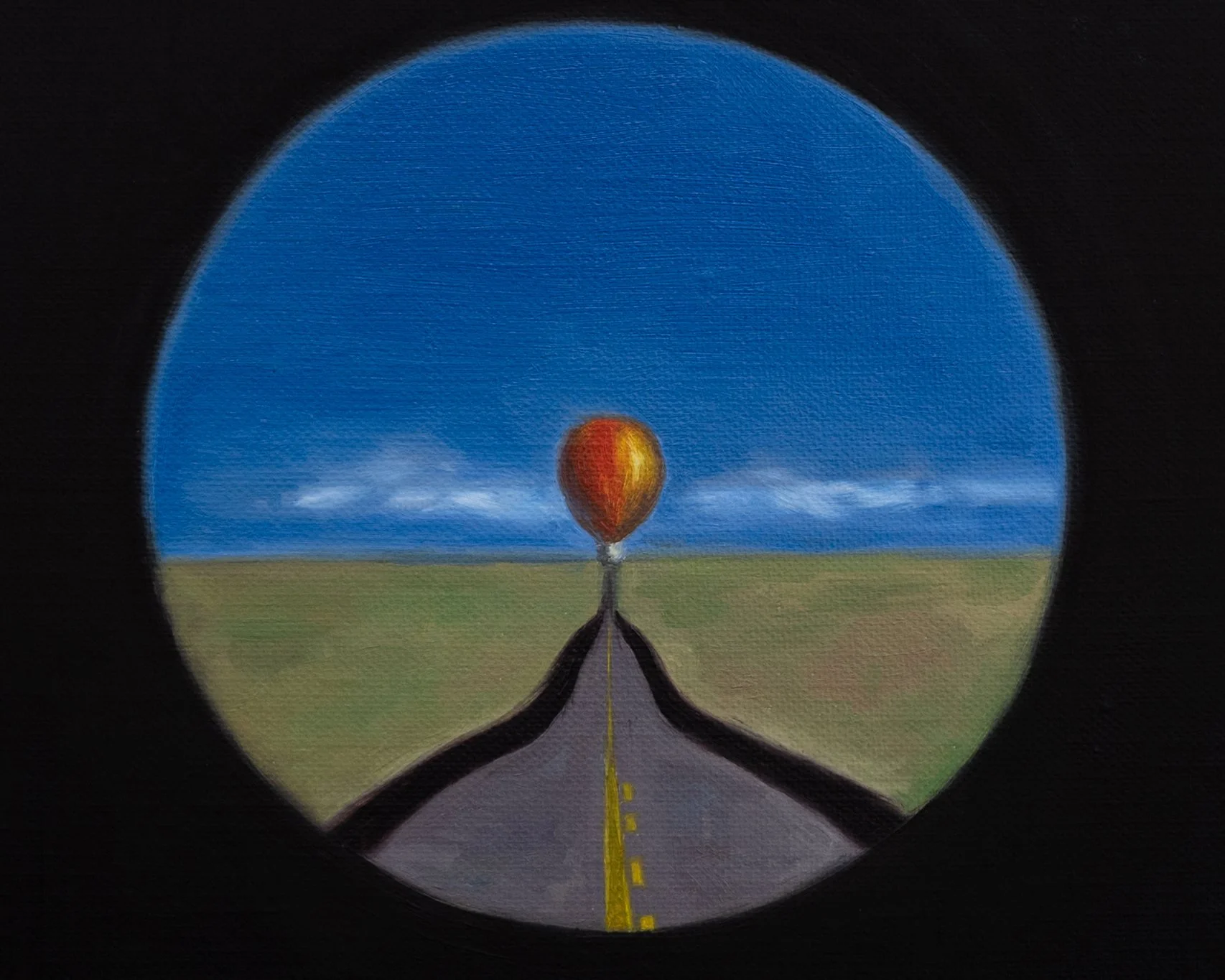Vision 2020
Vision, 2020
Oil on linen
11 x 14 inches / 27.9 x 35.6 cm each, Diptych
Tan Mu’s Vision (2020) guides viewers through the focusing process of human sight using a distinctive artistic approach. Characterized by black borders and circular viewing apertures at the center, these works mimic both the structure of the human eye and the perspective of a camera lens. Viewers are invited to examine the mechanics of seeing and the ways in which vision is replicated through technology. In the diptych pieces, two focal points represent the perceptual shift as the eyes switch between different objects. One image appears blurred, while the other is sharp, reflecting the natural astigmatism of human vision versus the instant clarity achieved through mechanical lenses. This transition not only illustrates technology’s intervention in our visual perception but also captures the fleeting moment of refocusing—akin to the magnification and extension of sight through a microscope or telescope. By documenting these shifts within a single time frame, Tan Mu highlights both the limitations and precision of vision, emphasizing its enclosed and concentrated nature.
Q: Could you describe the content and underlying meaning of your artwork "Vision" (2020)?
Tan Mu: This painting depicts the image seen inside an autorefractor during an eye examination. The experience stems from the routine eye check-ups I undergo every year or two. Since childhood, I have been deeply impressed by the surreal, highly focused images within the refractor, such as a small house or a hot air balloon, moments that have left a lasting memory. Interestingly, this image—the small house or hot air balloon—is almost universally recognized. People around the world, regardless of age or background, are familiar with this image as it is a standard part of eye examinations. It has become a shared visual memory, a moment of collective experience where technology alters the way we see the world. I view technology as an extension of our bodies; tools like microscopes and telescopes expand or alter our visual range, allowing us to see further or more minutely. "Vision" captures the process of technological adjustment of our sight in an instant, showcasing how technology can change our perception of the world in a moment.
Q: How do you express this mechanical intervention in vision through this diptych?
Tan Mu: In this diptych, I create a fusion of the abstract and the concrete to capture a moment of visual transformation. One panel portrays the raw, unfocused vision we naturally experience—a soft, diffused image that mirrors how our eyes see the world without any intervention. The other panel depicts the moment of clarity achieved through mechanical focusing, as if a lens has abruptly recalibrated our field of view. By placing these two states side by side, I invite the viewer to witness the shift from an organic, blurred perception to a clear, defined image, emphasizing how a brief technical intervention can redefine our visual experience. This transformation is inherently tied to time—much like the split-second events of a nuclear explosion or the splash of a droplet—capturing a fleeting moment when the world changes.
Q: You mentioned that the painting downplays the aspect of mechanical alteration of vision. Would you consider creating an image that emphasizes the machinery more in the future?
Tan Mu: Yes, in this painting, I chose to downplay the mechanical aspects of the vision testing process—the machine itself is not directly depicted. Instead, the painting shows the corrected vision and the effects before and after the machine's intervention. In the future, I might consider creating a version that includes the machine itself to more directly represent the mechanical process. But for now, I wanted to focus on the visual changes that occur through this intervention and how it alters our perception.





